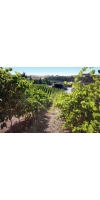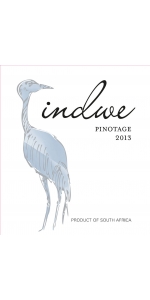Wine from Elim

Elim translates to, “Place of God,” and is a wine ward located in the Cape Agulhas region, and is the southernmost on the Western Cape. Elim is at the meeting point of the warmer Indian Ocean, and the cold Atlantic Ocean. Wine connoisseurs claim that it is the climate that makes the wine so good in Elim. Elim is located 20 kilometers from Agulhas.
German Moravian missionaries planted the first vines in 1842, as they needed wine for communion. The cool breezes from the south-west and southeast meet on the vineyards helping to prolong the growing season. Because of the gradual ripening process, the grapes are given plenty of fruity characters. Planting in the region ended over one hundred years ago, but resumed in 1997.
Elim has a variety of soils that include weathered shale, and laterite and sandstone that help contribute to the intensity and quality of the wines. The terroir in Elim is best suited for Sauvignon Blanc; however, the late and long ripening season is excellent for red grapes like Shiraz and Cabernet Sauvignon. There are several fresh water springs in Elim that leads to speculation of a huge underground lake underneath the coastal shelf.
Indwe Pinotage Coastal Region is made from 100 percent Pinotage.
Pinotage is a true South African grape variety, Our signature grape smilar to the Blue Crane being our national bird. Indwe Pinotage grapes are meticulously sourced from our grape producers along the Coastal region of the Western Cape ensuring complexity, depth and purity of fruit. The wine is layered with sweet cherry notes, and subtle hints of mocha and vanilla flavors.
- back
Selected Options
Regions
Categories
Pricing
Countries
Regions
Grape Types
Wineries
Organic/Free Shipping
Chavy-Chouet Bourgogne Rouge La Taupe is made from 100 percent Pinot Noir.
Chavy-Chouet's Pinot Noir is classified as humble Bourgogne Rouge, but the fruit for it comes from an excellent single-vineyard site near Pommard. La Taupe's parcel was once part of the Pommard AOC.
The wine is juicy with a great mouthfeel. It has classic Bourgogne Rouge aromas, with a candied cherry character as well as strawberry, raspberry and spice, yet the structure and length of finish reminds one of a Pommard - ripe & rich with a bigger body.
Average age of the vines: 70 years old.
Density of planting: 10,000 vines per hectare.
Soil: clay
100% distemmed.
Very little intervention. Less pigeage (punch down of the cap) but some remontage (pump-over)
Ferren Chardonnay Sonoma Coast is made from 100 percent Chardonnay.
The Sonoma Coast bottling is a blend of barrels from Ferren's single vineyard offerings; Lancel Creek, Silver Eagle, Volpert, and Frei Road Vineyards. The wine is always somewhat more approachable early in its life as less new oak is used in the blend. Pure and translucent fruit is the hallmark of this cuvée. Citrus, quince, sea spray, and minerals are buoyed by refreshing acidity and a seamless finish.
Review:
A nuanced, tangy, mouthwatering and approachable wine that is both complex and very drinkable. The aromas are delicate, lifted and fresh, with oyster shells, lime zest, white flowers and chamomile. The palate is super fresh, layering salinity, richness and a long finish. Medium- to full-bodied. Drink or hold
-James Suckling 98 Points





